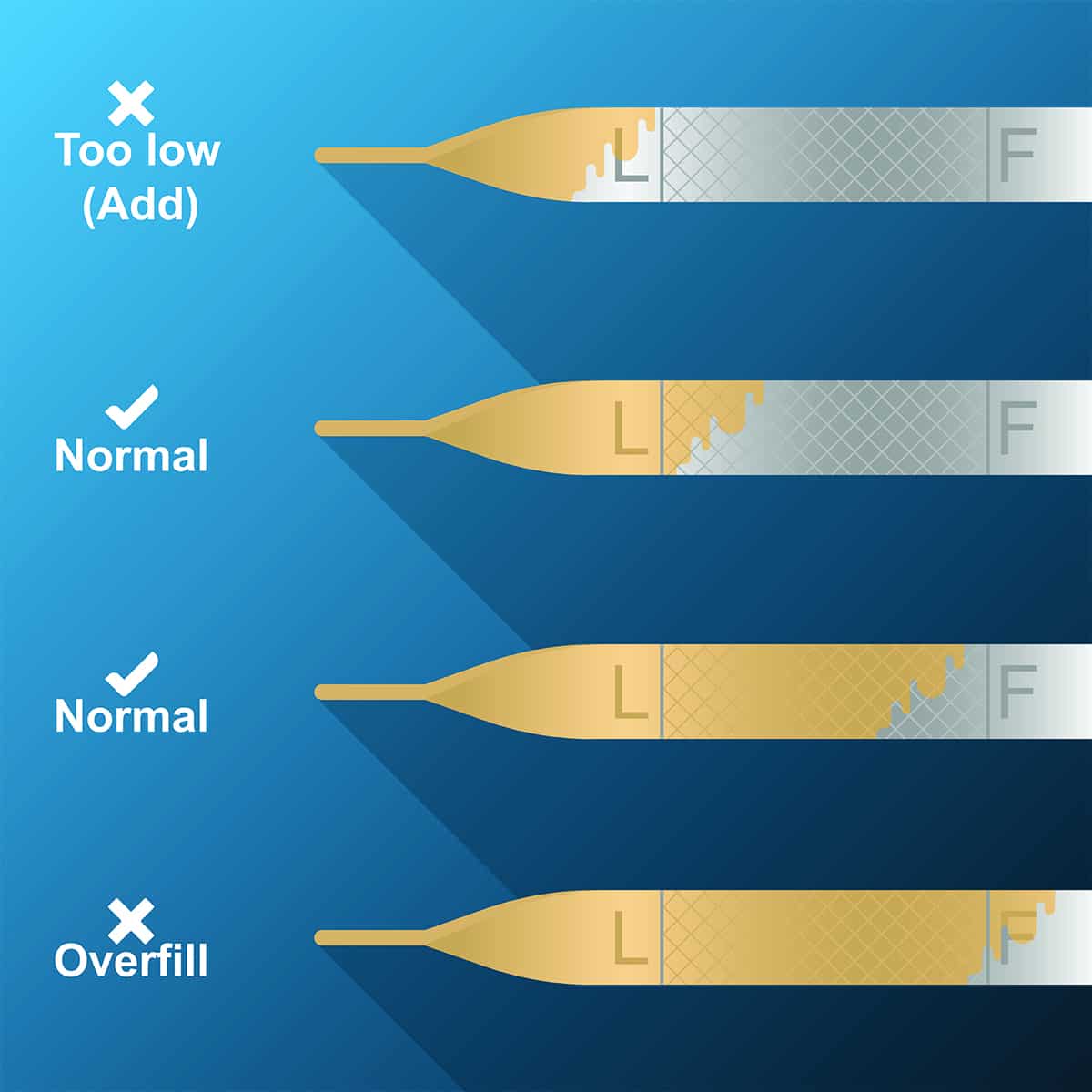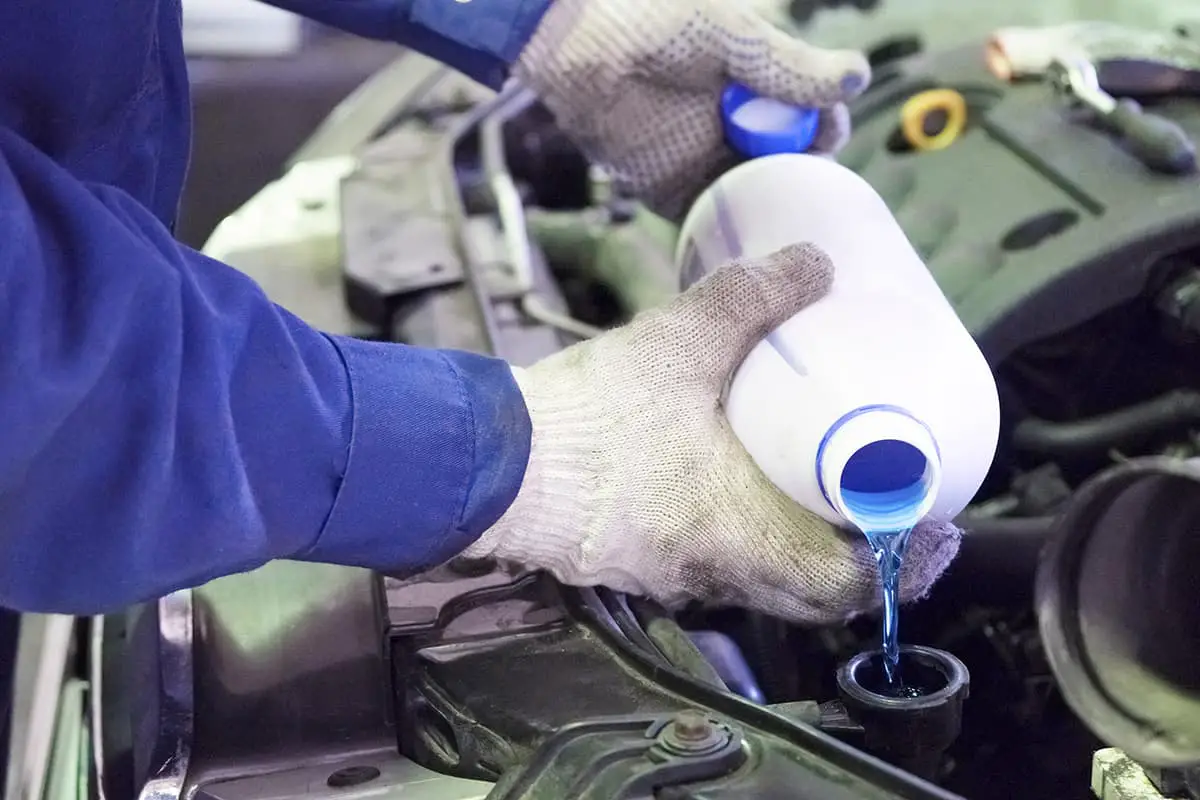The proper transmission fluid level is crucial for your vehicle’s performance. Overfilled transmission fluid can lead to several issues, affecting the transmission’s lifespan and overall driving experience.
The most common symptoms of using too much transmission fluid are as follows:
- Foam on the dipstick
- Erratic shifting and slipping gears
- Leaks
- Burning smell
This article will explore the symptoms, causes, and solutions for overfilled transmission fluid, as well as how to prevent it from happening.
Common Causes of Overfilled Transmission Fluid
Overfilled transmission fluid can cause significant damage to your vehicle, and it’s important to understand the common causes of this issue. One of the most common causes of overfilled transmission fluid is inaccurate fluid measurement or misreading the dipstick.
Inaccurate fluid measurement can occur due to a variety of reasons. For example, if the vehicle is parked on an uneven surface, the fluid level may appear low or high depending on the angle of the vehicle. Additionally, if the fluid is checked while the engine is still warm, it may appear to be at a higher level than it actually is due to the expansion of the fluid.
Misreading the dipstick can also lead to overfilled transmission fluid. It’s important to ensure that the dipstick is clean and dry before inserting it into the transmission to prevent any debris from skewing the reading. Furthermore, it’s important to follow the manufacturer’s instructions for checking the transmission fluid level, as some dipsticks may require the engine to be running while others may require it to be off.
Overfilled Transmission Fluid Symptoms
Overfilling the transmission with too much fluid can cause serious issues, just as having too little fluid can cause problems. If you poured too much transmission fluid, you may notice the following symptoms:
1. Foam on the stick
The excess fluid can create air pockets that lead to foam formation. The foam can cause erratic shifting or slipping of gears, which can lead to transmission damage over time.
2. Erratic shifting and slipping gears
This occurs because the excess fluid can create air pockets, which can lead to foam formation, as well as interfere with the fluid’s ability to lubricate the gears properly. As a result, gears may slip or fail to engage properly, leading to transmission damage over time.
3. Leaks
The excess fluid can cause the seals and gaskets to become dislodged, leading to leaks in the system. These leaks can cause damage to the transmission, resulting in expensive repairs.
4. Burning smell
If you notice a burning smell coming from your vehicle, it may be a sign of overfilled transmission fluid. The excess fluid can cause the fluid to overheat, which can lead to the burning smell. This can also cause damage to the transmission system and lead to costly repairs.
How to Check Transmission Fluid Level

Checking the transmission fluid level is a critical aspect of maintaining your vehicle’s performance and longevity. Here’s a step-by-step guide to help you check the transmission fluid level correctly:
- Step 1. Park on a level surface—To obtain an accurate reading, it’s essential to park your vehicle on a level surface. This ensures that the fluid is evenly distributed within the transmission.
- Step 2. Warm up the engine—Start your car and let the engine warm up to its normal operating temperature. This allows the transmission fluid to expand and provide an accurate reading.
- Step 3. Shift through the gears—With your foot on the brake, shift through all the gears of your transmission, pausing briefly in each gear. This ensures that the fluid circulates throughout the transmission system.
- Step 4. Locate the dipstick—Open the hood of your vehicle and locate the transmission fluid dipstick, which is typically marked with a bright-colored handle. The location of the dipstick may vary, so consult your owner’s manual if you’re unsure.
- Step 5. Clean the dipstick—Remove the dipstick from the transmission and wipe it clean with a lint-free cloth or paper towel.
- Step 6. Insert and remove the dipstick—Reinsert the dipstick fully into the transmission, then remove it again. This will give you an accurate reading of the fluid level.
- Step 7. Check the level—Examine the dipstick and note the fluid level. There are usually two markings: one for “cold” and one for “hot.” Compare the fluid level to these markings. If the fluid level is within the range of the “hot” marking, the transmission fluid level is acceptable. If it’s above the “hot” marking, the fluid may be overfilled.
- Step 8. Check the fluid condition—In addition to checking the fluid level, it’s essential to examine the fluid’s color and smell. Healthy transmission fluid is typically a translucent red color and has a slightly sweet smell. If the fluid appears dark, dirty, or smells burnt, it may be time for a transmission fluid change.
What to Do When You Have Overfilled Transmission Fluid
If you’ve discovered that your transmission fluid is overfilled, it’s crucial to address the issue promptly to prevent damage to your vehicle’s transmission. Here’s a guide on what to do when you have overfilled transmission fluid:
DIY draining excess transmission fluid
If you’re confident in your mechanical abilities and have the necessary tools, you can drain the excess transmission fluid yourself.
First, locate the transmission drain plug or pan, which is typically found underneath the vehicle. Position a drain pan beneath the plug or pan to catch the excess fluid. Loosen the plug or remove the pan bolts, and carefully drain the excess fluid until the level is within the acceptable range.
Be sure to consult your owner’s manual or a trusted repair guide for specific instructions and safety precautions.
Get professional help
If you’re unsure about tackling the task yourself or lack the necessary equipment, it’s best to consult a professional mechanic. They will have the experience and tools needed to safely drain the excess transmission fluid and ensure your vehicle’s transmission is functioning correctly.
Repairing Damage Caused by Overfilled Transmission Fluid
Overfilled transmission fluid can cause various issues, such as erratic shifting, slipping gears, and overheating. If you notice any of these symptoms or suspect that your vehicle’s transmission has been damaged, it’s essential to have it assessed by a professional mechanic.
The cost of repairing damage caused by overfilled transmission fluid can vary significantly, depending on the extent of the damage and the make and model of your vehicle. A professional mechanic will be able to provide an accurate estimate of the repair costs, so you can make an informed decision on how to proceed.
Preventing Overfilled Transmission Fluid
Overfilled transmission fluid can lead to a host of issues, making it essential to prevent this problem from occurring. Here are some tips and best practices to help you avoid overfilling your transmission fluid:
1. Regular transmission fluid checks
Consistently monitoring your transmission fluid levels is the first step in preventing overfilled transmission fluid. Make it a habit to check your fluid level at least once a month, or more frequently if you drive your vehicle under heavy loads or in severe conditions.
2. Follow the manufacturer’s recommendations
Always follow the manufacturer’s recommendations for the type and quantity of transmission fluid needed for your vehicle. These guidelines are designed to ensure the optimal performance of your transmission system. You can find the recommended fluid type and quantity in your owner’s manual.
3. Transmission fluid changes
Adhering to the recommended transmission fluid change intervals for your vehicle is essential for maintaining the appropriate fluid level (usually every 30,000 to 60,000 miles). Over time, transmission fluid can break down, and contaminants can accumulate, making it less effective at lubricating and cooling your transmission. Regular fluid changes can help prevent overfilled transmission fluid by ensuring that the fluid remains clean and at the correct level.
FAQs
1. How often should I check my transmission fluid level?
It’s recommended to check your transmission fluid level at least once a month or more frequently if you drive under heavy loads or in severe conditions. Regular checks help maintain proper fluid levels and prevent issues related to overfilled transmission fluid.
2. Can overfilled transmission fluid cause permanent damage?
Yes, overfilled transmission fluid can cause permanent damage to your vehicle’s transmission system. Issues such as erratic shifting, slipping gears, and overheating can lead to costly repairs or even the need for a complete transmission replacement if left unaddressed.
3. How much does it cost to fix overfilled transmission fluid?
The cost to fix overfilled transmission fluid varies depending on the method used. Draining excess fluid yourself can be inexpensive, requiring only basic tools. However, if you choose to seek professional help or need to repair damage caused by overfilled fluid, the cost can range from a few hundred to several thousand dollars.
4. Is it possible to drive with overfilled transmission fluid?
While it may be possible to drive with overfilled transmission fluid, it is not recommended. The increased fluid pressure can cause erratic shifting, slipping gears, and overheating, potentially leading to severe and expensive damage to your transmission system.
5. How do I know if my transmission fluid is overfilled?
To determine if your transmission fluid is overfilled, you’ll need to check the fluid level using the dipstick. If the fluid level is above the “hot” marking on the dipstick, it may be overfilled. Additionally, symptoms such as erratic shifting, slipping gears, and overheating can indicate overfilled transmission fluid.







